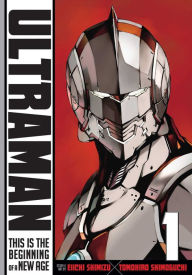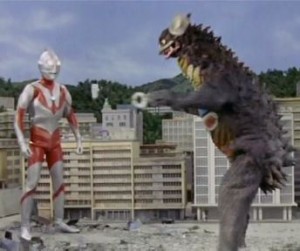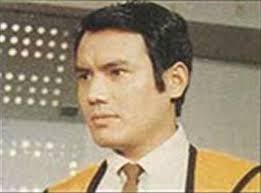 I don’t read a lot of Manga. I’ve read a half-dozen of them in my life. I have nothing against the genre, it just doesn’t often grab me. Even when a sort of hybrid Manga is produced, which stars characters I know from other media, the product usually doesn’t reach out and grab me.
I don’t read a lot of Manga. I’ve read a half-dozen of them in my life. I have nothing against the genre, it just doesn’t often grab me. Even when a sort of hybrid Manga is produced, which stars characters I know from other media, the product usually doesn’t reach out and grab me.
According to Wikipedia, by the way, “Manga” simply refers to comics created in Japan; so the word “Manga” then wouldn’t necessarily refer to a body of work whose members all share the same characteristics, any more than American comic books all share the same characteristics. It would seem a bit silly to say that Neil Gaiman’s Sandman and My Little Pony are the same genre. But the Wikipedia article does specify that Manga works do conform to a particular style developed in late 19-th Century Japan, so I guess I’m not insane for thinking of them as a distinct genre.
But even given a genre that usually doesn’t grab me, it’s hard to resist anything which stars one of the favorite fantasy characters of my childhood, one of the few such characters who has survived the ensuing decades unscathed, unstripped of his childish veneer of heroic wonder. It’s hard to resist a silver giant who loves humankind so much that, if necessary, he’ll die to save us from the monsters that plague us. It’s hard to resist glowing, jeweled eyes, a blinking heart light that warns of danger, ray beams that come from crossed hands.
It’s hard to resist Ultraman.
 And clearly, creators Eiichi Shimizu and Tomohiro Shimoguchi agree with me. Neither of them was yet born when Ultraman first graced TV screens in Japan, and, later, courtesy of the amazing Peter Fernandez and his friends, in the US in 1967. And yet Ultraman, far more in Japan than in America, is an enduring cultural icon, and captures the imaginations of generation after generation. There have been over two dozen different Ultraman characters created in the last five decades, each tweaked to appeal to new audiences.
And clearly, creators Eiichi Shimizu and Tomohiro Shimoguchi agree with me. Neither of them was yet born when Ultraman first graced TV screens in Japan, and, later, courtesy of the amazing Peter Fernandez and his friends, in the US in 1967. And yet Ultraman, far more in Japan than in America, is an enduring cultural icon, and captures the imaginations of generation after generation. There have been over two dozen different Ultraman characters created in the last five decades, each tweaked to appeal to new audiences.
For the Manga, the creators have gone back to the original Ultraman character for source material. The first Ultraman was a spaceman from M-78 who accidentally injured a super-scientific police officer named Hayata. He saved Hayata’s life by merging forms with him. When there was danger, which in fictional Tokyo in 1967 always meant one of the giant monsters called Kaiju, Hayata would lift his wondrous Beta Capsule and transform himself into the giant Ultraman.
Ultraman was created by, Eiji Tsuburaya, co-creator of Godzilla, and was so successful that he’s spawned 26 sequel TV series to date and countless films. Each series featured a new protagonist, and each gave the hero different origins and powers. Sooner or later, though, each new Ultraman would be shown to be related to Ultramen of the past, all coming from M-78, all with some kind of blood tie to that first Ultraman.
 The Manga makes it a direct blood tie… with a twist. This is the story of yet another new Ultraman, yes; but this Ultraman is the son, not of an extraterrestrial, but of Hayata, the first Ultraman’s human counterpart. Hayata was so changed by his merging with a Giant of Light (one of many terms used for Ultraman’s race) that his son, Shinjiro, is born indestructible, and with powers of flight that resemble the early version of Superman. At least, if he can’t leap over tall buildings in a single bound, he can leap off a building and glide to a smooth landing.
The Manga makes it a direct blood tie… with a twist. This is the story of yet another new Ultraman, yes; but this Ultraman is the son, not of an extraterrestrial, but of Hayata, the first Ultraman’s human counterpart. Hayata was so changed by his merging with a Giant of Light (one of many terms used for Ultraman’s race) that his son, Shinjiro, is born indestructible, and with powers of flight that resemble the early version of Superman. At least, if he can’t leap over tall buildings in a single bound, he can leap off a building and glide to a smooth landing.
Shinjiro knows nothing of his father’s heritage until his teen years, nor does Hayata actually realize until then that both he and his son of inherited “the Ultraman factor” as a result of Hayata’s decades-gone union with the original Ultraman. Hayata just knows there’s something different about his son.
Now the Ultraman Factor isn’t the same as lifting a Beta Capsule and transforming into a giant of light. It doesn’t give father or son colossal size, nor the tremendous strength required to fight a Kaiju. Over the course of six issues, both must don exo-suits in order to go into battle. Still, albeit at a reduced size, the human side of the original Ultraman is back in business, with his son following desperately in his footsteps after he’s captured by the (literally) big bad.
 Point of order for purists – On TV, Hayata went back into action several times during the course of the Ultraman Mebius series and at least two subsequent films, one of several elder statesmen of the Land of Light, working with his baby brother, the (then) newest Ultraman. Still, this is the first time since the 1960s that a work with true United States distribution has brought Hayata back to us. (I don’t know if it counts that Ultraman Mebius is now legally available on Crunchyroll.com.)
Point of order for purists – On TV, Hayata went back into action several times during the course of the Ultraman Mebius series and at least two subsequent films, one of several elder statesmen of the Land of Light, working with his baby brother, the (then) newest Ultraman. Still, this is the first time since the 1960s that a work with true United States distribution has brought Hayata back to us. (I don’t know if it counts that Ultraman Mebius is now legally available on Crunchyroll.com.)
Does it feel like the original Ultraman series? No. It feels like Manga–loaded with teen angst and with a male protagonist pretty enough to give Angelina Jolie a run for her money. Shinjiro worries over being too shy to talk to girls, and, Smallville-style, tries to stand up to bullies without getting carried away with this Ultra-strength. (He does break one leg.)
But Ultraman the Manga series does feel like Ultraman, with all the joy and wonder and heroics of the genre. It has a little of the grit and realism that characterize modern comics–but just a dash. Overall, it’s a good start to a new series for Ultraman in a medium that has, thus far, sadly underused him.

Considering the importance of Ultraman to Ernest Cline, you most certainly should read Ready Player One if you have not already read this.
‘Tis on my TO READ list since you mentioned it last year. I’m just SLOW!
Pingback: Ultraman Manga Action Figure - Guest Review on The Figure in Question - Steven H. WilsonSteven H. Wilson
Pingback: Guest Review #0033: Ultraman | The Figure In Question